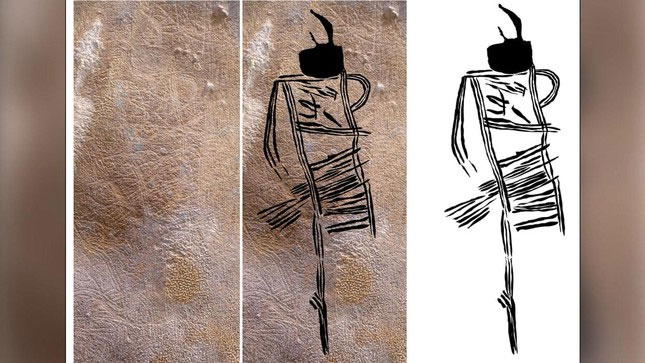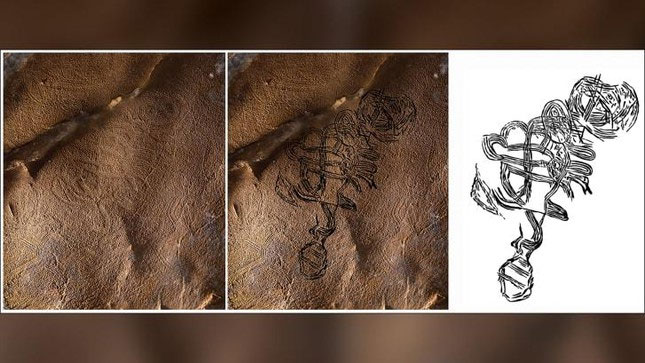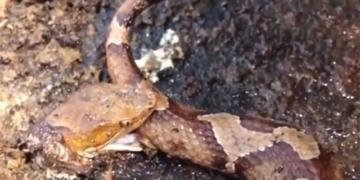Massive Paintings by Native Americans Revealed by Scientists A team of scientists has recently unveiled the largest cave art ever discovered in North America, which has remained hidden in an Alabama cave for over 1,000 years.
These artworks were previously invisible until researchers employed new 3D scanning technology to uncover them.

The 3D scanning technology enabled researchers to discover the massive paintings concealed within the deep cave.
The large artwork was found inside Cave 19 in Alabama (the name has been kept confidential to protect the site from vandalism). Although its location was initially discovered in 1998, the cave’s strict access limitations made the mud drawings invisible. However, hundreds of smaller images were identified throughout the cave at that time.
These gigantic paintings may depict the spirits of the underworld and date back to the first millennium AD. According to the study, the art was created before any external contact, or before Native Americans encountered outside cultures.
Jan F. Simek, an outstanding professor of science at the University of Tennessee, Knoxville, and his team initially stumbled upon the massive paintings while researching cave interior documentation in early 2017.
Simek, the lead author of the study, stated: “We knew the cave contained mud glyphs from Native Americans before contact, and we were conducting a 3D imaging documentation project to assist in management and preservation.”
The imaging process involved taking thousands of photographs to create a 3D model. This generated an accurate record of the site, revealing secret artworks, particularly due to the cave’s very low ceiling. During two months of fieldwork, the team captured 16,000 images.
During the 3D imaging sessions, the research team captured a vast view of the ceiling beyond where sunlight penetrated into the cave and discovered five previously unknown figures.
Utilizing photogrammetry in the cave and at other sites could transform how scientists explore and understand Native American cave art, including the intentions and meanings behind the designs.
Spiritual-Themed Figures

Spiritual-themed cave drawings
Researchers were able to use the 3D model to manipulate the cave ceiling to study the details of the inscriptions and create digital drawings based on intersecting patterns. Four of the artworks depict human-like figures dressed in elaborate costumes.
Researchers noted that the drawings share a spiritual theme—similar to figures that exhibit supernatural characteristics—comparable to other known rock art in the region, suggesting they may represent characters in previously unknown religious stories, possibly from the Middle Woodland period between 200 BC and 600 AD.
Despite an entrance that is 10 meters high and 15 meters wide, the chamber containing the artwork has a low ceiling just 0.6 meters above the cave floor. This means that anyone who created the artwork would have had to crouch or crawl through the chamber—and the paintings could only be viewed by lying on the cave floor.
The artworks were created during a time when indigenous tribes were gradually transitioning to agriculture and establishing permanent settlements.
These tribes utilized their surroundings to honor their religious and spiritual beliefs, constructing earthen mounds as pathways for spirits to ascend to the upper world and using caves as sacred spaces leading to the underworld.
Researchers remarked: “The large drawings painted in the cave may represent the spirits of the underworld, their power and significance expressed through shape, size, and context.”
While this creation is similar to large outdoor rock art found in Utah and other locations across North America, it is unusual to find such large drawings hidden within a cave.
North American Cave Art was first discovered in Tennessee in 1979 and dates back 750 to 800 years. Since that initial discovery, 89 other sites have been found throughout the southeastern United States. The oldest site dates back 7,000 years, but most cave art was created between 800 and 1600 AD.
Researchers believe that our ancestors conquered darkness to create the world’s oldest artworks.


















































